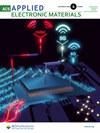A novel adaptive weight bi-directional long short-term memory (AWBi-LSTM) classifier model for heart stroke risk level prediction in IoT
IF 4.3
3区 材料科学
Q1 ENGINEERING, ELECTRICAL & ELECTRONIC
引用次数: 0
Abstract
Stroke prediction has become one of the significant research areas due to the increasing fatality rate. Hence, this article proposes a novel Adaptive Weight Bi-Directional Long Short-Term Memory (AWBi-LSTM) classifier model for stroke risk level prediction for IoT data. To efficiently train the classifier, Hybrid Genetic removes the missing data with Kmeans Algorithm (HKGA), and the data are aggregated. Then, the features are reduced with independent component analysis (ICA) to reduce the dataset size. After the correlated features are identified using the T-test-based uniform distribution-gradient search rule-based elephant herding optimization for cluster analysis (GSRBEHO) (T-test-UD-GSRBEHO). Next, the fuzzy rule-based decisions are created with the T-test-UDEHOA correlated features to classify the risk levels accurately. The feature values obtained from the fuzzy logic are given to the AWBi-LSTM classifier, which predicts and classifies the risk level of heart disease and diabetes. After the risk level is predicted, the data is securely stored in the database. Here, the MD5-Elliptic Curve Cryptography (MD5-ECC) technique is utilized for secure storage. Testing the suggested risk prediction model on the Stroke prediction dataset reveals potential efficacy. By obtaining an accuracy of 99.6%, the research outcomes demonstrated that the proposed model outperforms the existing techniques.用于预测物联网中心脏中风风险水平的新型自适应加权双向长短期记忆(AWBi-LSTM)分类器模型
由于死亡率不断上升,中风预测已成为重要的研究领域之一。因此,本文提出了一种新颖的自适应加权双向长短期记忆(AWBi-LSTM)分类器模型,用于预测物联网数据的中风风险水平。为了高效地训练分类器,混合遗传利用均值算法(HKGA)去除缺失数据,并对数据进行聚合。然后,使用独立分量分析(ICA)减少特征,以减小数据集的大小。之后,使用基于 T 检验的均匀分布-梯度搜索规则的象群优化聚类分析(GSRBEHO)(T-test-UD-GSRBEHO)识别相关特征。然后,利用 T-test-UDEHOA 相关特征创建基于规则的模糊决策,以准确划分风险等级。从模糊逻辑中获得的特征值将交给 AWBi-LSTM 分类器,由其预测和分类心脏病和糖尿病的风险等级。预测出风险等级后,数据会被安全地存储到数据库中。这里使用了 MD5-Elliptic Curve Cryptography(MD5-ECC)技术进行安全存储。在中风预测数据集上对建议的风险预测模型进行测试后,发现该模型具有潜在的功效。研究结果表明,建议模型的准确率达到 99.6%,优于现有技术。
本文章由计算机程序翻译,如有差异,请以英文原文为准。
求助全文
约1分钟内获得全文
求助全文

 求助内容:
求助内容: 应助结果提醒方式:
应助结果提醒方式:


